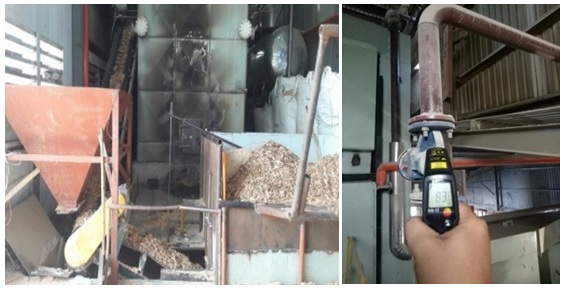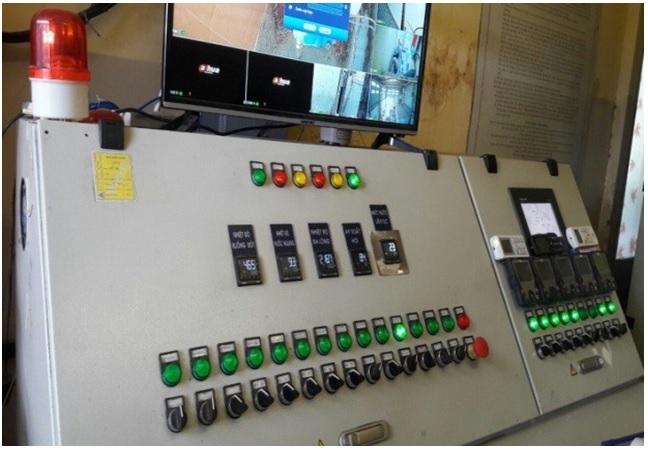BP47 - NutiFood
| Company name: NutiFood Joint Stock Company (NutiFood) | |
| Address: Lot E3-E4 D1 Street, My Phuoc Industrial Park, Ben Cat Town, Binh Duong province | |
| Project Summary: Optimization of the boiler operation to reduce the energy consumption at NutiFood - Binh Duong | |
| Year of implementation: 2019 | |
|
Status before implementation The company's steam system consists of a rice husk pellet fired chain grate steam boiler with capacity of 6 tons of steam/hour and an woodchip-fired stationary fluidized bed boiler with capacity of 15 tons of steam/hour. According to the actual survey, the current state of the boiler was as follows: - The average oxygen content in exhaust fume was relatively low at 3.4%. There might be not enough oxygen supplied to the boiler, causing incomplete combustion and losses of incompletely burnt fuel. - The factory had no automated device for boiler blowdown, no overflowing discharge available only blowdown. The boiler blowdown was manually operated. The conductivity of the boiler blowdown water measured at the site was 295ppm, remarkably lower than the blowdown standard. It is showed that the blowdown during the day was really high - 10.17%, thereby causing unnecessary energy loss. - The energy efficiency of the boiler calculated by the indirect method was 61.8%. Surface temperature measured at some uninsulated locations was quite high.
Image of uninsulated pipelines, fuel |
Result The plant has implemented three main solutions, as follows: - Replacement of the feedwater economizer with a new one. - Investment in an RO water treatment system. - Increase of the secondary airflow to ensure the complete combustion of fuel and adjustment to obtain the optimal combustion.
Picture of boiler control room After following up for two months, the boiler energy efficiency increased from 61.8% to 65.69%. |
|
Status before implementation The company's steam system consists of a rice husk pellet fired chain grate steam boiler with capacity of 6 tons of steam/hour and an woodchip-fired stationary fluidized bed boiler with capacity of 15 tons of steam/hour. According to the actual survey, the current state of the boiler was as follows: - The average oxygen content in exhaust fume was relatively low at 3.4%. There might be not enough oxygen supplied to the boiler, causing incomplete combustion and losses of incompletely burnt fuel. - The factory had no automated device for boiler blowdown, no overflowing discharge available only blowdown. The boiler blowdown was manually operated. The conductivity of the boiler blowdown water measured at the site was 295ppm, remarkably lower than the blowdown standard. It is showed that the blowdown during the day was really high - 10.17%, thereby causing unnecessary energy loss. - The energy efficiency of the boiler calculated by the indirect method was 61.8%. Surface temperature measured at some uninsulated locations was quite high.
Image of uninsulated pipelines, fuel |
|
|
Result The plant has implemented three main solutions, as follows: - Replacement of the feedwater economizer with a new one. - Investment in an RO water treatment system. - Increase of the secondary airflow to ensure the complete combustion of fuel and adjustment to obtain the optimal combustion.
Picture of boiler control room After following up for two months, the boiler energy efficiency increased from 61.8% to 65.69%. |
|
| Result of the project: | |
| Total investment costs: | VND 1,000 Million |
| Power saving: | 97.5 tons of biomass/month equivalent to 1,172 tons/year |
| Cost savings: | VND 1,482 Million/Year |
| Payback time: | 9.7 months |




